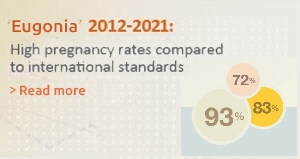Next generation sequencing (NGS) constitutes one of the major advances in molecular biology of the last 20 years and has revolutionized genomic research. As a method, it has been applied in multiple fields, such as the food industry, botany, microbiology, forensic genetics and of course, the health sector and particularly in preimplantation genetic diagnosis (PGD).
NGS is a method for sequencing millions of DNA bases in parallel (the DNA's building blocks). More simply, it allows us to "read" almost all "letters" of the "book" that is our DNA. It constitutes one of the outcomes of the Whole Genome Sequencing Program, a fundamental program carried out by international research groups between 1990 and 2003. Since then, the cost and time required for DNA sequencing have dramatically dropped and NGS is now considered an accessible and affordable method for the identification of genetic anomalies.
Regarding preimplantation diagnosis, NGS allows us to simultaneously diagnose a high number of genetic disorders, from the same biological material. Compared to previous diagnostic methods, NGS has a higher sensitivity and accuracy, while it can also diagnose mosaicism in the embryo (differences in the genetic makeup between the cells, leading to false diagnoses). It is capable of identifying changes not only on a chromosomal level, but also in a single gene, by essentially combining the older PGD and PGS methods, and thus providing us with multiple information regarding the embryo’s health. Hence, the healthy embryo that will be selected, has the best chances for a successful pregnancy.
The process itself is similar to the older methods of PGD. The embryos generated in the laboratory following microinjection (ICSI), are cultured until the blastocyst stage on the 5th day of development. The embryologists are then performing a biopsy, removing a small number of cells from the blastocyst, which are then sent to a genetics laboratory for NGS analysis. The analysis may concentrate on the whole genome, or just a part of it.





























